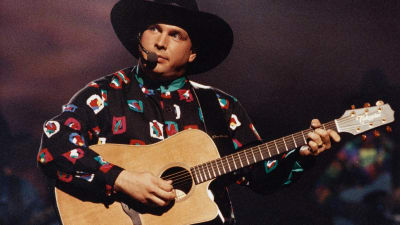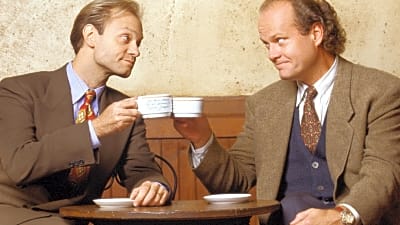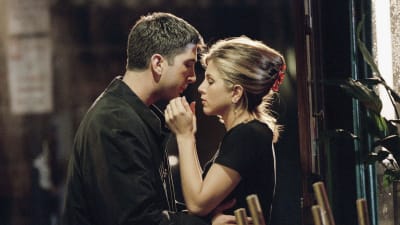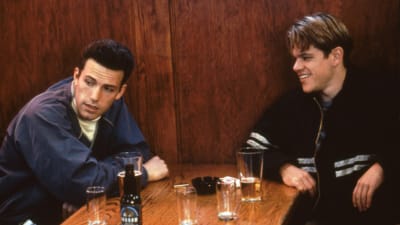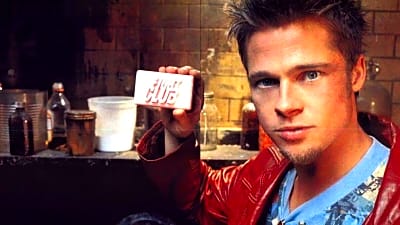
Clive Barker's "Nightbreed": The "Star Wars" of horror that almost was
Clive Barker happened fast. One day, horror fiction hounds were worshipping the usual gods (Stephen King, Peter Straub, Ray Bradbury, etc.). Then word escaped England of a brash young writer who penned gore-soaked tales overlaid with a heavy dollop of eroticism. His six “Books of Blood” short story collections hit trade paperback shelves just as his first two scripted films, “Underworld” (aka “Transmutations”) and “Rawhead Rex," received glossy coverage in the pages of Fangoria.
The films were not hits, nor were they particularly good, which prompted Barker to take the directorial reins himself for “Hellraiser." an adaptation of his novella “The Hellbound Heart." Once audiences got a taste of Barker’s kinky-cruel aesthetic, his books became bestsellers, aided immensely by one of the greatest pull-quotes in publishing history: “’I have seen the future of horror, and its name is Clive Barker’ – Stephen King." After scoring another box office success with “Hellbound: Hellraiser II," Barker appeared to be on the cusp of superstardom.
It was time to make a leap, and that leap was called “Nightbreed.”
Based on his novella “Cabal," the film had an irresistible hook: What if humans were the monsters, and the monsters (aka Nightbreed) were the good guys? Aaron Boone* (Craig Sheffer) is a moody hunk plagued by nightmares of murder and a far-off land of fantastic creatures called Midianis. His therapist, Decker (David Cronenberg), and girlfriend, Lori (Anne Bobby), are concerned for his mental state, but only the latter has his best interests at heart. It turns out that Midian exists, and the Nightbreed have been hunted to near-extinction by humans; Boone, later christened Cabal, is their only hope.
Joe Roth’s Morgan Creek shingle, which had a distribution deal with 20th Century Fox, was high enough on the idea to give Barker a then significant $11 million budget to build the mystical underground world of Midian on a massive Pinewood Studios soundstage. Barker was not shy about voicing his ambitions; he wanted to make the “Star Wars” of horror films, and, to that end, hired the sci-fi classic’s celebrated concept artist, Ralph McQuarrie, to design a 60-foot mural imparting the Breed’s history as a kind of ancient cave painting. Danny Elfman, hot off scoring Tim Burton’s “Batman," was hired to give the film a lush orchestral sweep. Makeup artists Bob Keen and Geoffrey Portass headed up a creature f/x team tasked with creating all manner of beastly personae. This was no modest undertaking, and Barker’s rapidly expanding fan base couldn’t have been more excited for it.
After delaying its fall 1989 release date due to reshoots, “Nightbreed” finally hit theaters 30 years ago, on Feb. 16, 1990. It finished seventh at the U.S. box office over its opening weekend and totaled a paltry $8.8 million by the end of its run. Critics were more baffled than hostile. Entertainment Weekly’s Owen Gleiberman spoke for the consensus view when he called it “cluttered and rather incoherent, as though the trailers to four different horror movies had been spliced together.” There was no salvaging “Nightbreeed." Barker had made a leap all right: straight into director jail.
As with all big swings from talented filmmakers, the theatrical version of “Nightbreed” was far more interesting than its mixed-to-negative notices suggested. It was certainly more intriguing than its ad campaign made it out to be. Actually, it was a completely different movie. Though Fox’s marketing department had an excellent reputation at the time (based largely on its inventive campaign for 1988’s “Die Hard”), it couldn’t crack Barker’s monster mash. First, it tried to sell the world and then hawked the humans-vs.-monsters action (replete with the propulsive “Bishop’s Countdown” cue from James Horner’s “Aliens” score). Then, in a fit of desperation near the film’s release, it bait-and-switched audiences by positioning it as a slasher film (going so far as to lift the key art from the studio’s “Bad Dreams”).
It’s impossible to say whether Fox psyched itself out by backing off a straight sell of “Nightbreed," but the initial tagline — “At last, the night has a hero” — might’ve resonated with moviegoers chasing the comic book high of “Batman." And though the film has a clunky setup in both its theatrical and director’s cuts, it takes flight once we’re introduced to Midian’s monstrous denizens.
The imaginative creature makeup combined with playful performances from Oliver Parker (Peloquin), Hugh Ross (Narcisse) and Doug “Pinhead” Bradley (Lylesberg) get us rooting for these deformed misfits. On the villain side, Cronenberg is frighteningly placid as the sadistic Decker, while Charles Haid has a (literal) cigar-chomping blast as a redneck cop hellbent on eradicating the Nightbreed.
In many ways, “Nightbreed” anticipates the pro-mutant (i.e. pro-queer) sensibility of Bryan Singer’s “X-Men” movies. Humans fear these creatures and would rather eradicate them than try to incorporate their ilk into normal society. Until Boone shows up, the Breed, led by Lylesberg, protects what is left of its kind by never straying beyond the boundaries of Midian. It’s a live-and-let-live truce. Boone upends this détente by wanting to live among the Breed while retaining a tie to humankind via his romance with Lori — which leads to Midian’s prophesied downfall. Decker, meanwhile, craves Boone’s access to Midian; when he realizes he can’t belong to this subculture or possess Boone, he seeks to destroy them both.
This was a lot of thematic freight to throw on a horror movie in 1990 when the AIDS crisis was ravaging LGBTQ communities and straight America was cackling at the "Men on Film" sketches. That Barker refuses to resolve these elements (a sequel was part of his Morgan Creek deal) leaves both cuts of the film feeling like failed pilots, and it’s a huge bummer.
This was Barker’s shot at shaking up mainstream moviegoers with a hopeful tale of so-called “monsters” triumphing over their vicious human oppressors. Had Fox drawn folks to theaters in sufficient numbers, the rousing third act would’ve elicited cheers and allowed Barker to broaden his vision of the other searching for sanctuary. He could've made us identify the real monsters. Instead, we wait for the next wind. If not tonight, then tomorrow.
More must-reads:
- 20 actors more than willing to star in a reboot of their hit TV show
- Kevin James thought of sitcom guys as "big, wacky" characters until Ray Romano's 'Everybody Loves Raymond'
Breaking News
Trending in Entertainment
Customize Your Newsletter
 +
+
Get the latest news and rumors, customized to your favorite sports and teams. Emailed daily. Always free!
